The United States has long played a central role in global development funding, supporting humanitarian aid, economic initiatives, and security programs worldwide. Between 2008 and 2023, annual aid spending ranged from $52.9 billion to $77.3 billion, positioning the U.S. as the world’s single-largest aid donor. By 2024, the U.S. contributed 40% of all humanitarian aid tracked by the United Nations.
In 2024, Peace & Security emerged as the top-funded sector, receiving $13.45 billion and impacting 179 countries across South America, Africa, Eastern Europe, the Middle East, and Asia. Health followed closely with $12.55 billion, humanitarian assistance received $10.79 billion, and economic development initiatives were allocated $8.86 billion.
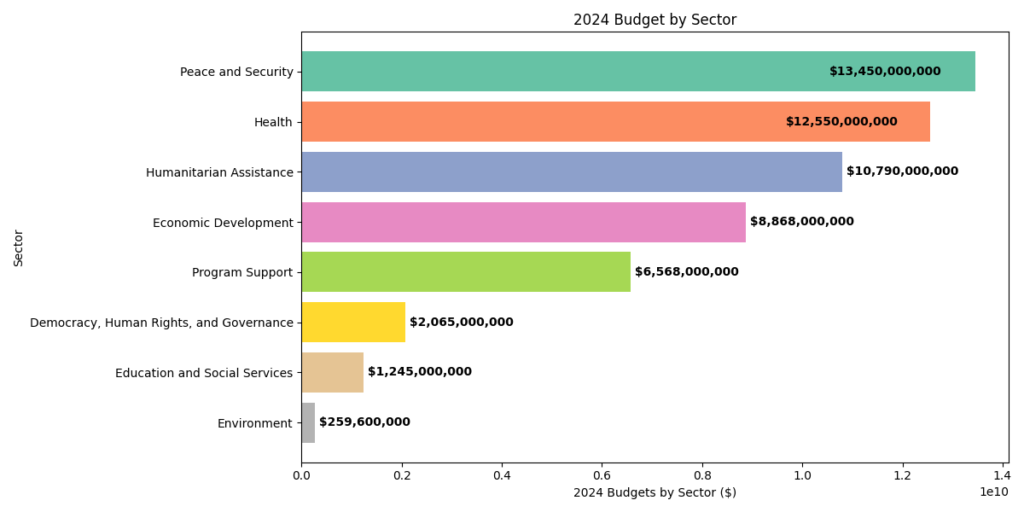
Leading these efforts were the U.S. Agency for International Development (USAID), managing $32 billion, and the U.S. Department of State, administering $21 billion (Foreign Assistance).
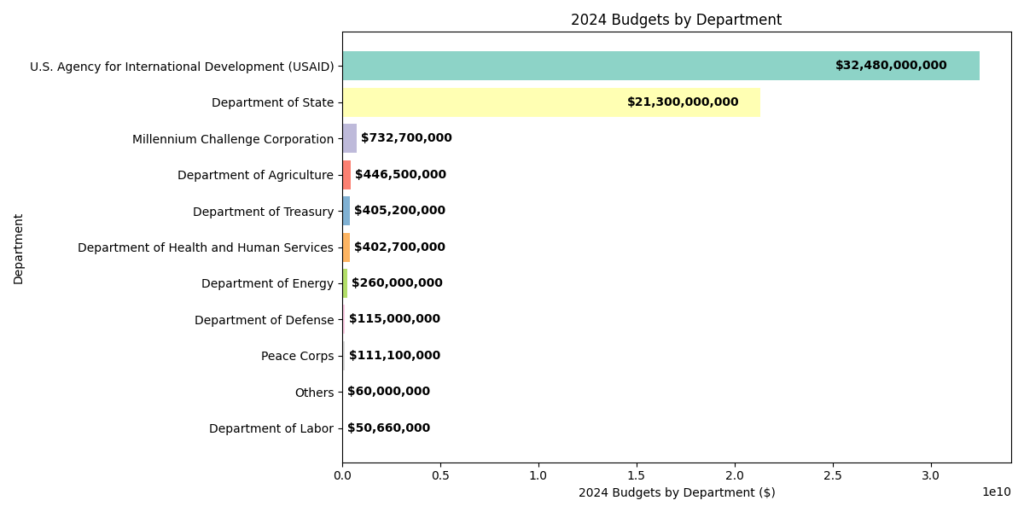
However, a significant shift occurred in January 2025 when President Donald Trump issued a stop-work executive order, pausing all U.S. foreign assistance programs for 90 days. The administration described this move as a strategic pause aimed at reassessing U.S. investments abroad. Concurrently, Elon Musk‘s Department of Government Efficiency (DOGE), established to modernize federal spending, accelerated sweeping budget reductions, targeting an ambitious $2 trillion in cuts. As a result, federal grants and contracts were widely terminated, significantly disrupting ongoing projects managed by agencies including USAID and the Department of Education. Approximately 77,000 federal employees were dismissed, and numerous programs were dismantled or redirected.
The sudden policy change generated widespread confusion among aid organizations, especially regarding the interpretation of vague waivers included in the executive order. The halt in funding immediately impacted global humanitarian and development projects, particularly in Africa, Asia, and Latin America. Critical sectors such as public health, education, economic empowerment, basic assistance, and food security faced uncertainty and disruptions, disproportionately affecting vulnerable communities’ dependent on U.S. support.
Data Analysis: Who Was Affected the Most?
To quantify the impact of these decisions, we analyzed data from 5,724 terminated contracts. Below is a breakdown of how different regions were affected based on key metrics. To explore in detail the countries and sectors impacted by these terminations, please follow the link to access the USAID Terminated Grants Dashboard.
Top 10 Countries Affected by Number of Contracts
Among the hardest-hit countries, those receiving significant U.S. aid saw an alarming number of contract terminations. The most affected nations were the Philippines with 96 contracts, Jordan with 79 contracts, Kenya with 77 contracts and Uganda with 76 contracts as shown in the table below.
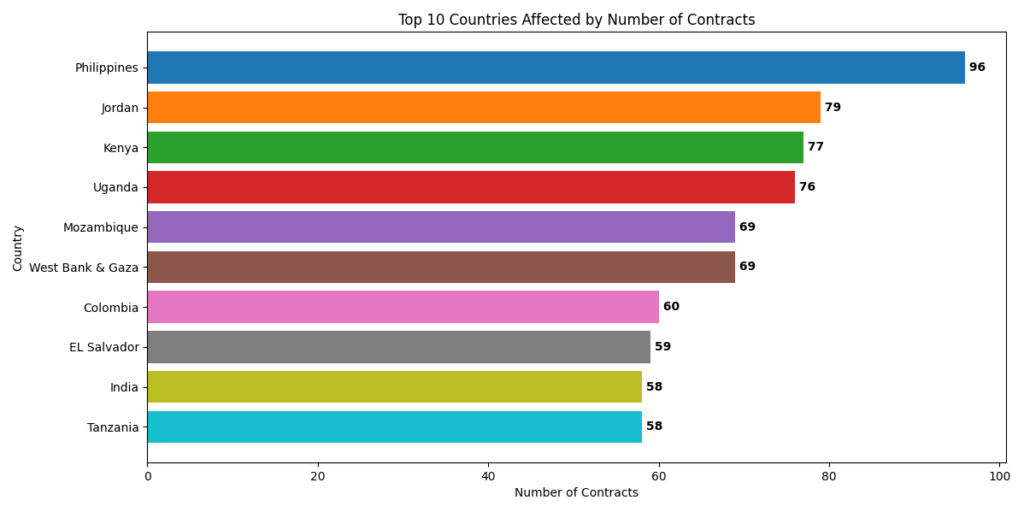
This list reveals that countries in Africa, Asia and the Middle East bore the brunt of the funding cuts, particularly nations that had relied on U.S. support for development projects and humanitarian aid.
Top 10 Countries Affected by Total Estimated Cost
Beyond the number of contracts, some countries lost particularly large financial commitments. The nations with the highest total estimated contract values that were terminated were El Salvador with 15 Billion, Kenya with 3.2 Billion and Ukrain with 3.2 Billion.
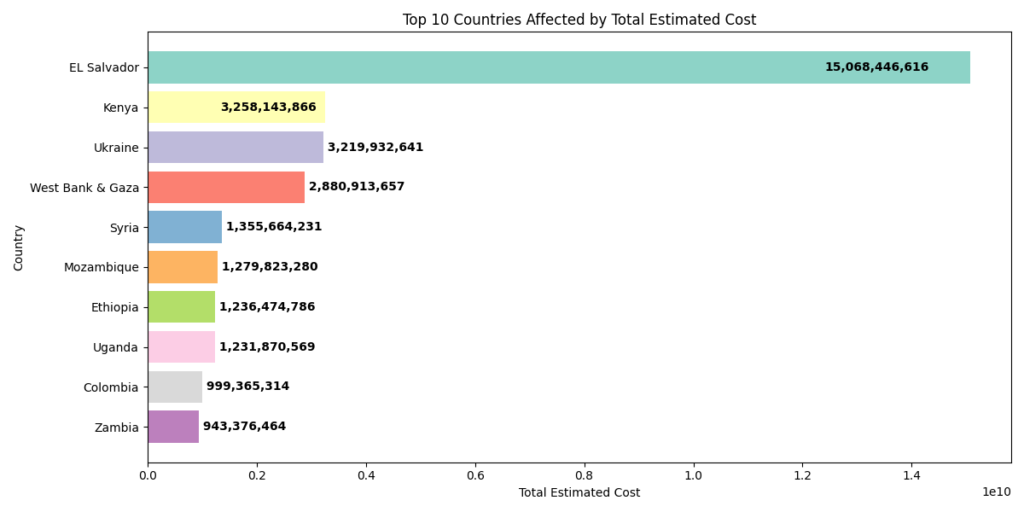
These figures suggest that some of the largest humanitaria, infrastructure and development projects were abruptly halted, potentially setting back years of progress in sectors like healthcare, energy, and economic development.
Top 10 Countries by Obligated Amount to Date
While total estimated cost represents the overall contract value, the obligated amount indicates how much funding had already been disbursed. The top 10 countries that had received the most funding before their contracts were terminated included Ukrain with 2.6 Billion, Afghanistan with 774 Million and Zambia with 763 Million.
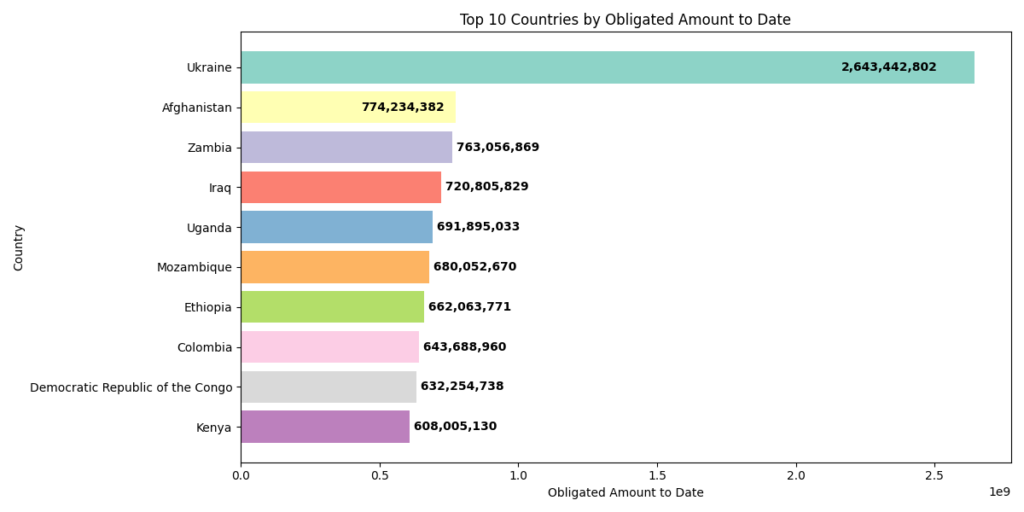
Zooming out, we also examined how different continents were impacted. The continents with the highest number of contract terminations were Africa, Asia while the largest financial losses were observed in projects based in Africa, Central America, Asia and the Middle East, where major infrastructure and health programs were reliant on U.S. funding.
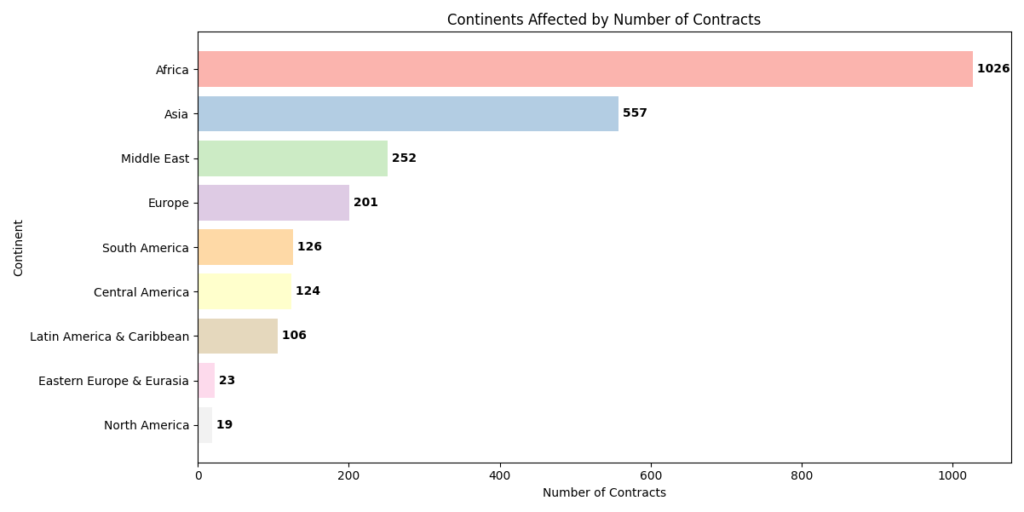

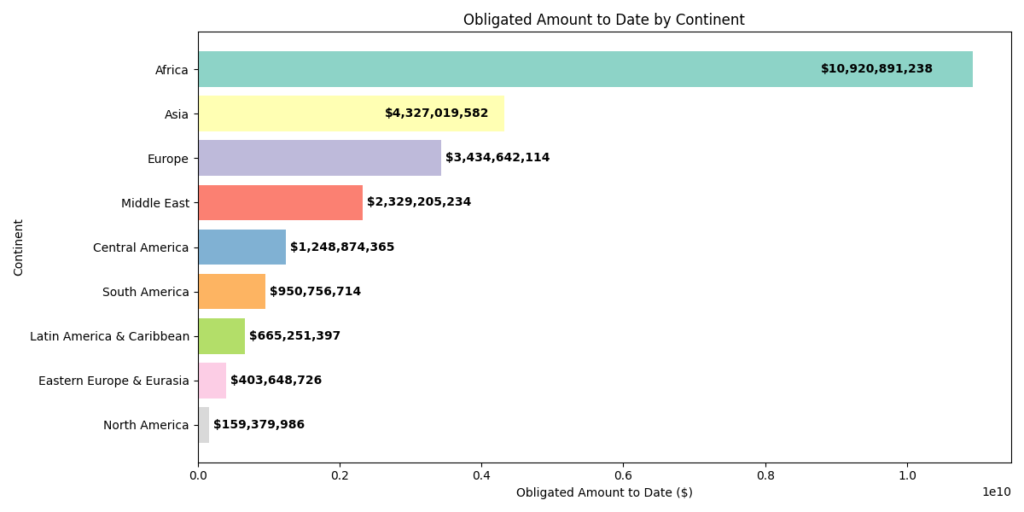
The Broader Impact on International Funding
The large-scale termination of U.S. grants and contracts is likely to have profound and lasting consequences on international funding and humanitarian support.
- Increased Financial Uncertainty for Aid Organizations – Many international NGOs rely on U.S. grants for long-term planning. The sudden halt in funding has disrupted operations, leading to layoffs and uncertainty for future projects.
- Geopolitical Shifts in Development Funding – As U.S. aid retracts, other global powers such as China and the European Union may step in to fill the gap, potentially reshaping alliances and economic dependencies.
- Humanitarian Crisis Risks – In countries where U.S. funding supported essential health and food programs, abrupt discontinuation could exacerbate existing crises, leading to increased instability.
- Trust and Future Investment Concerns – Governments and international agencies may hesitate to enter into future agreements with the U.S., fearing similar disruptions in funding commitments.
The termination of U.S. grants and contracts in 2025 represents a pivotal moment in international development funding. While the Trump administration and DOGE justified these measures as necessary efficiency reforms, the data reveals a widespread impact on aid-dependent nations. As the global community grapples with these changes, the future of humanitarian and economic support remains uncertain.
Disclaimer
The information provided in this blog post has been compiled from a variety of international sources. While every effort has been made to ensure accuracy, the data presented may be subject to errors, discrepancies, or variations due to differences in reporting methodologies among sources. Readers are encouraged to consult primary or authoritative sources for specific inquiries or further verification.
This post is intended solely for analytical and informational purposes. It does not represent political opinions, endorsements, or affiliations with any political groups, governments, organizations, or individuals mentioned herein. The analysis provided herein reflects objective reporting and should not be interpreted as commentary on political or policy decisions.
The author assumes no responsibility or liability for any consequences resulting from the use or interpretation of the data presented. All views expressed are impartial and based solely on available data at the time of writing.

